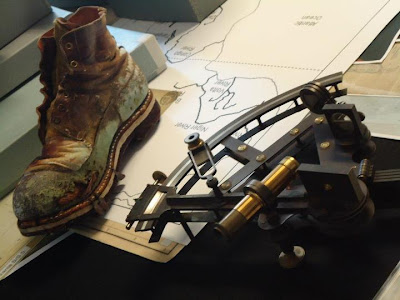| Royal Geographic Society: Photo Courtesy of the RGS Website |
Jokes aside, starting from its foundation in 1830 and going until the modern day, the society has been behind most of the greatest exploratory missions in the western world. It was members of the society who discovered the origin of the Nile river for Europeans, who traveled to the Poles, who investigated vast swaths of earth and brought the information back to England. The society began as a gentlemen club, first as one generally interested in the sciences before become a group primarily interested in, you guessed it, geography. From there they expanded, eventually becoming the society that is so famous today.
As the societies main goals were to acquire information and then bring it back for the people of Britain, they would need a lot of space and thus the archive was born. Not only do they have documents like maps and notes from various expeditions but they also have scientific instruments and personal items from the societies most high profile explorers.
 |
| George Mallory's boot, recovered from Mt. Everest : Photo by Audrey Taylor |
Most of the items in the societies collections have to do with 4 main regions of exploration:
Africa
The Polar Regions
The Antartic
Central Asia and Everest
There are 2 millions items in the collection which breaks down thusly:
1 million plus map sheets
Atlas'
Globes
1/2 million pictures (photos, drawings etc)
250,000 manuscripts
1,500 objects (vases, boots, and a tin of meat flavored sweets just to name a few that we saw)
The reading room of the society is hyper modern, having been opened in 2004, and is open for students and professors to use free of charge. Others have to pay a small fee in order to come in and conduct research. Nowadays the society sticks to funding smaller projects and making their findings available to researchers; sensitive to issues of imperialism they tend to stick closer to home. They raise money through memberships, events, and renting out the building to various functions and the Queen is also a patron of the society.
Overall it was a fascinating (and in the case of the meat lozenges gross) look into the history of exploration in Britain and the preservation of that history.
No comments:
Post a Comment